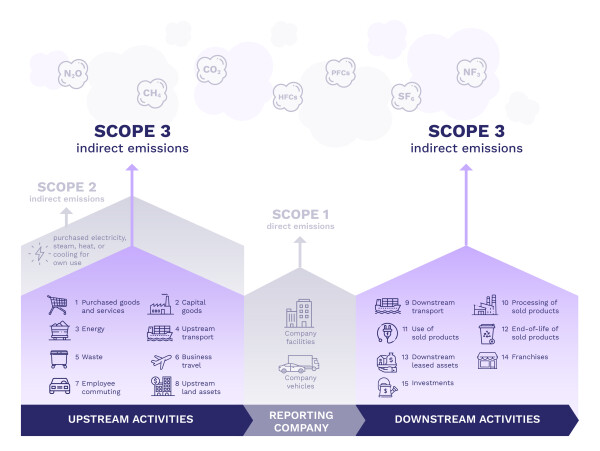Sometimes the hardest part is knowing where to start. That’s why our carbon experts have created our simple, free online thinkstep-anz Scope 3 Explorer. It will help you identify the emissions that are most relevant to your business.
Why does this matter?
For three hugely important reasons, involving size, science and spaghetti. Here they are.
Scope 3: your hidden source of emissions
Your value chain is your hidden source of carbon emissions. It’s quite possibly your biggest source of emissions too. There’s a lot of carbon:
- emitted to produce and transport the goods and services you buy (your upstream emissions)
- released when you transport your products and services to your customers, and they use them (your downstream emissions).
Your biggest source of value chain emissions is likely to differ by sector and business. If you’re a service organisation like a law firm, it’s probably travel to and from your clients. If you’re a restaurant, it’s likely to be the food and beverages you buy to serve up on your menu. If you’re a technology provider selling computer equipment, you probably generate most emissions when your customers fire up and use their devices each day.
Scope 3 and science-based targets
The Science Based Targets initiative (SBTi) recognises the importance of value chain emissions. They won’t approve a science-based target (SBT) for an organisation if they’ve not assessed their Scope 3 emissions. And if these emissions account for more 40% of total emissions, the organisation must include them in its reduction target.
Near-term targets (five years) must include 68% of Scope 3 emissions (if they make up 40%+ of total emissions). And if you want to be truly net-zero, you’ll need to meet a long-term target too, one that covers 95% of your Scope 3 emissions.
Scope 3 and value chain ‘spaghetti’
Reducing Scope 3 emissions is important for another reason. With value chains increasingly linked in a ‘spaghetti’ of relationships, one business’s Scope 3 reductions can be another’s Scope 1 or 2 reductions, and vice versa.
For example, most businesses use electricity, banking, and transport services. When these businesses tackle their Scope 3 emissions, they encourage providers of these services to reduce their Scope 1 and 2 impact.
And vice versa: when power, finance, and logistics companies reduce their Scope 1 and 2 emissions, they reduce their customers’ Scope 3 impact. It’s a win for everyone – and the global environment. This is the benefit of organisations like the SBTi that bring businesses together by country and across the globe to tackle things together.
Why reducing Scope 3 emissions can be tricky
Chances are you’re making headway with your Scope 1 emissions (direct) and Scope 2 emissions (indirect, from electricity). They’re relatively tangible and the data is within reasonable reach. For example, you can measure the petrol that powers your vehicles and consult your monthly power bill.
Your Scope 3 emissions are different. They sit in your value chain – with your suppliers and customers. If you want to reduce them, you need to start by understanding the 15 categories involved and identify the ones matter most to your business. That’s where our Scope 3 Explorer comes in.
Step one: understand the 15 categories of Scope 3 emissions
Here are the 15 categories of Scope 3 emissions.
Click on image to view full size
Step two: understand which emissions matter most to your business
Our thinkstep-anz Scope 3 Explorer will get you started. This self-assessment brings together international best practice (the GHG Protocol and ISO14061-1) in 14 multi-choice questions. It will help you scope the task at hand. Which emissions are:
- relevant to your organisation? Which types of emissions do you create?
- material to your organisation? What are your biggest sources of emissions? Where should you focus to make the greatest difference?
You’ll receive a short PDF report highlighting the most important emission categories for your business.
